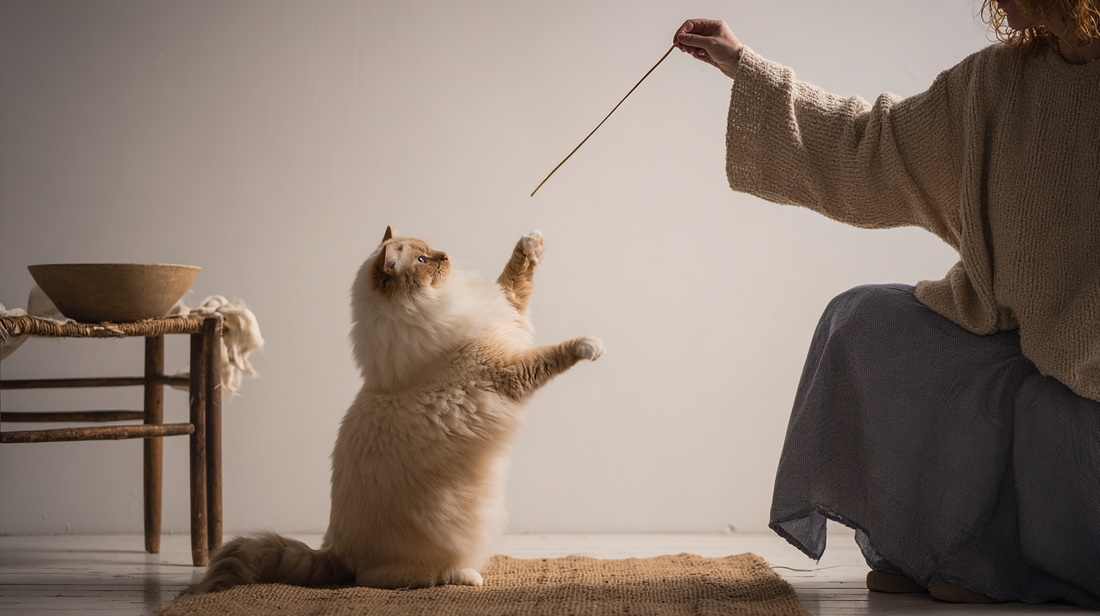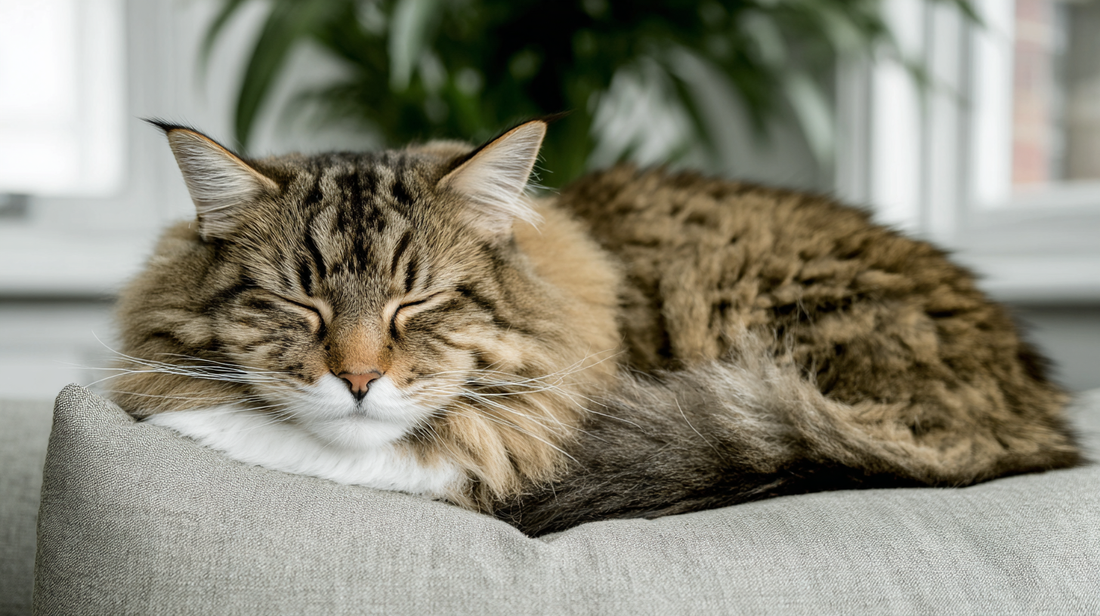As an experienced veterinarian, I understand that anticipating new arrivals in your feline family can be both exciting and uncertain. You may find yourself observing subtle changes in your beloved cat, wondering whether she's simply having a lazy day or if something more significant is unfolding within her. Just as every cat possesses a unique personality, every pregnancy journey presents its own distinctive set of clues. My goal is to equip you with the knowledge needed to understand these changes and guide you on how your veterinary team can become your most valuable partner throughout this special process.
Summary
Understanding feline pregnancy: What every cat owner should know
Your cat's pregnancy, or gestation, represents a relatively short but transformative period in her life. Unlike humans, where early pregnancy signs can be quite obvious, feline pregnancy tends to be discreet in its initial stages. Your cat will typically become visibly pregnant by approximately four weeks after successful mating. This means that during the first few weeks, you might not notice any overt signs at all, making early detection something of a detective game. This reality highlights precisely why close observation of your cat's normal behavior and physical state becomes so crucial.
How can I tell if my cat is pregnant: The telltale signs
While your cat might keep her secret well-guarded initially, certain changes will become apparent as her pregnancy progresses. These careful observations, when combined with professional veterinary examination, will provide you with the clearest possible picture.
Physical changes that signal pregnancy
One of the most noticeable changes you'll observe in your expecting queen (pregnant female cat) is her increased appetite and subsequent weight gain. As her pregnancy advances, your cat's body will require significantly more energy and nutrients to support the developing kittens within her. This increased caloric demand means she'll likely begin eating more than usual, and you'll want to pay attention to this change. Her heightened food intake serves a crucial purpose—not only for maintaining her own health, but also for ensuring the optimal growth and development of her growing litter.
As your cat's appetite increases, you'll naturally begin to observe gradual weight gain. Monitoring her body condition score (BCS) can prove helpful when you're assessing her condition at home. The body condition score represents a semi-quantitative method that allows you to estimate her fat reserves by visually assessing and gently feeling specific areas of her body, such as her ribcage, waist, and abdominal fat pad.
An ideal body condition score typically measures 5 out of 9, where her ribs remain easily palpable but not visually prominent, and she maintains a noticeable waist when you view her from above.

Visual signs of pregnancy progression
The most obvious physical sign you'll notice around the four-week mark involves abdominal enlargement. Your cat's belly will begin rounding out and becoming noticeably larger, clearly indicating that her kittens are growing and requiring more space.
Additionally, you should watch for a common early indicator of feline pregnancy that typically appears around two to three weeks—what we call the "pinking up" of her nipples. This phenomenon refers to her nipples becoming more prominent, noticeably pinker in color, and sometimes slightly enlarged as blood flow increases in preparation for future milk production.

Behavioral changes during pregnancy
Beyond the physical shifts you'll observe, your cat's behavior may also offer valuable clues about her impending motherhood. As her pregnancy advances, particularly during the later stages, your cat will likely begin exhibiting what we call nesting behavior. This represents an instinctual drive to create a safe, secluded, and comfortable space where she can give birth and raise her kittens.
You may find her seeking out quiet, private areas throughout your home, such as closets, spaces under beds, or even inside cardboard boxes. She may begin arranging blankets, shredding paper, or gathering soft materials to construct a cozy den for her future family.
You'll also likely notice shifts in her overall temperament during this time. Some cats become noticeably more affectionate and actively seek out additional attention from their human families, while others may become somewhat withdrawn or even slightly irritable, showing a clear preference for solitude. She may also spend considerably more time resting or sleeping, as her body works to conserve energy for the increasing demands of pregnancy.
Professional veterinary confirmation: The essential next step
While your careful observations prove invaluable in this process, professional veterinary confirmation remains absolutely essential. Relying solely on home observation can easily lead to misinterpretations, as many of these signs could potentially indicate other health conditions entirely. Your veterinarian possesses both the expertise and specialized tools necessary to definitively confirm pregnancy, thoroughly assess your cat's overall health, and ensure that both mother and developing kittens receive the optimal care they need.
Diagnostic methods veterinarians use
At our clinic, your veterinarian can perform several different diagnostic methods to definitively confirm your cat's pregnancy. These may include gentle abdominal palpation, which allows us to feel for the developing fetuses, or advanced imaging techniques such as ultrasound or radiography.
Ultrasound technology can confirm pregnancy as early as two to three weeks into gestation, allowing your veterinarian to visualize tiny heartbeats and assess fetal viability. Later in your cat's pregnancy, X-rays can help us count the exact number of kittens she's carrying, which proves invaluable when we're helping you anticipate the birth process ahead.

Specialized nutrition guidance for pregnant cats
A crucial aspect of veterinary care during your cat's pregnancy involves providing tailored nutritional guidance specifically for her needs. Pregnant cats develop significantly increased energy and nutrient requirements as their pregnancy progresses. Your veterinarian can provide you with specific dietary recommendations and work with you to create personalized feeding plans, carefully calculating the exact food volumes your cat will need based on her individual energy requirements.
It's important to remember that cats are obligate carnivores, meaning they have unique dietary requirements, such as specific amino acids like taurine, which are primarily found in meat sources. A balanced, high-quality diet during this critical period proves vital for preventing nutrient deficiencies that could potentially impact both your cat's health and the proper development of her growing kittens.
Your veterinarian can also discuss any potential genetic health concerns that may be related to your cat's specific breed or health history. They can help you understand these risks clearly and guide you in making well-informed decisions about your cat's care during pregnancy and beyond.
Preparing for kittens: Planning for birth and beyond
Once your cat's pregnancy has been confirmed, preparing for the upcoming birth becomes your next exciting step in this journey. Your veterinarian will prove invaluable in helping you understand exactly what to expect during labor and delivery. They can provide you with detailed guidance about each stage of the birth process and advise you on what actions to take if any complications should arise.
Having a clear, well-thought-out plan in place will help you feel significantly more confident and prepared for this important event.

Caring for newborn kittens
After your kittens arrive safely, your responsibilities as a pet owner will continue with their early care and crucial socialization. Properly socializing the kittens proves essential for ensuring they develop into well-adjusted cats who will be ready for their new homes at approximately 12 weeks of age. This important process involves gentle handling, careful exposure to various sights and sounds, and consistent positive interactions that help them develop into confident, friendly adult cats.
If you're planning to find new homes for the kittens, you'll bear the responsibility of providing potential new owners with essential information about their complete history, including their dietary needs, litter training progress, any health issues affecting their parents, vaccination records, and their individual personalities.
Preventing unwanted pregnancy: Responsible pet ownership
For many pet owners, managing an unexpected pregnancy can feel overwhelming and stressful. If you don't intend to breed your cat in the future, surgical sterilization represents a highly recommended and responsible choice for her long-term health.
For male cats, this procedure involves removing the testes through a relatively simple operation, which can significantly reduce aggression, eliminate territorial spraying indoors, and reduce the risk of injuries or diseases that result from fighting or mating behaviors. For female cats, spaying involves removing the ovaries and part of the uterus through a more comprehensive surgical procedure, but it offers significant long-term benefits including increased longevity and the complete elimination of common reproductive cancers.
Choosing to neuter your cat helps prevent unwanted litters while contributing positively to their overall health and long-term well-being.

Final thoughts: Partnering with your veterinary team for success
Successfully recognizing the signs of feline pregnancy requires both keen observation skills and a strong partnership with your veterinary team. From noticing your cat's increased appetite and gradual weight gain to observing abdominal enlargement and distinctive nesting behaviors, each clue you observe paints an important part of the overall picture. However, it's ultimately your veterinarian who provides the final, professional confirmation along with comprehensive plans for proper care, specialized nutrition, and thorough birth preparation.
The journey of feline pregnancy resembles building a tiny, intricate city within your cat's body—it requires careful planning, constant monitoring, and access to the right resources for everything to flourish successfully. By staying consistently attuned to your cat's changing needs, communicating openly with your veterinary team, and actively seeking their expert guidance, you'll lay the strongest possible foundation for ensuring a healthy mother and thriving kittens.
The information in this article is based on the following scientific publications:
- Elliott, J., & Grauer, G. (Eds.). (2006-2007). BSAVA Manual of Canine and Feline Nephrology and Urology (2nd ed.). BSAVA Publications.
- Villiers, E., & Blackwood, L. (Eds.). (2005). BSAVA Manual of Canine and Feline Clinical Pathology (2nd ed.). BSAVA Publications, Gloucester
- Horwitz, D. F., & Mills, D. S. (Eds.). (2009). BSAVA Manual of Canine and Feline Behavioural Medicine (2nd ed.). BSAVA Publications, Gloucester
- Harvey, A., & Tasker, S. (Eds.). BSAVA Manual of Feline Practice: A Foundation Manual. BSAVA Publications
- Rendle, M., & Hinde-Megarity, J. (Eds.). (2022). BSAVA Manual of Practical Veterinary Welfare (1st ed.). BSAVA Publications.
Looking for a solution? Start here
Stylla Hydration for cats
Supports optimal hydration with amino acid-based formulation
- Encourages drinking with amino acid flavour enhancers
- Supports urinary health through increased water intake
- Promotes kidney function with specialised ingredients
Made in Switzerland with strict quality standards





